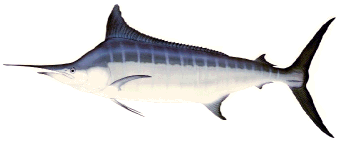 |
 |
 |
 |
 |
 |
 |
 |
 |
 |
 |
 |
 |
 |
|
|
TOXIC CONTAMINANTS |
|
|
|
The Smithsonian Institution's Registry of Tumors (Harshbarger and Clark 1990) has documented that fish with serious contaminant-related abnormalities are generally found in those areas of the U.S. affected most by coastal pollution, particularly from about 1,300 major industrial and 600 municipal dischargers (OTA 1987). Contrary to the misimpression given by statements from federal monitoring programs (O'Connor 1990) to the effect that U.S. coastal contaminants are declining (but actually reporting largely on banned substances such as DDT and PCBs) or are below toxic levels (Long and Morgan 1990), there is extensive evidence from NMFS's scientists of serious contamination by hundreds of toxic and/or long-lived materials such as petroleum derivatives and a vast number of chlorinated hydrocarbon compounds in sediments and benthic animals throughout U.S. urbanized inshore waters. Many benthic animals collected by these scientists have contaminant-associated adverse biological effects (Zdanowicz et al. 1986, Varanasi et al. 1989, Arkoosh et al. 1991, Myers et al. 1991, Casillas et al. 1992, Johnson et al. 1992, Johnson et al. 1993 in press, Johnson et al. 1994, Varanasi et al. 1993 in press). Similar problems have been observed downstream of major agricultural areas (Pait et al. 1989, Scott et al. 1990). Aromatic hydrocarbons from the combustion of fossil fuels and petroleum products, which are widely found in urbanized estuaries, have been linked by NMFS to the development of several types of contaminant-induced lesions and other effects in those fish exposed to such compounds, as described below. |
|
|
|
Cause and effect relationships between particular contaminants, particularly aromatic hydrocarbons, and liver lesions (tissue abnormalities) have been established by NMFS in both the laboratory (Schiewe et al. 1991) and the field (Landahl et al. 1990). Liver cancer, the most extreme lesion, has been found in 20% of English sole collected from two of the most contaminated areas of Puget Sound (Myers et al. 1987) and in 15% of winter flounder samples from similarly affected areas of Boston Harbor (Murchelano and Wolke 1991). However, a very high percentage of bottom-dwelling fish from the more degraded U.S. coastal sites show other contaminant-induced health problems as well. For example, liver cancer and pre-cancerous liver lesions have been found in 33% and 93%, respectively, of the target fish collected from a site highly contaminated with petroleum hydrocarbons located in the Elizabeth River, Virginia (Vogelbein et al. 1990). Because of the complexity of the problem of multiple toxins and other stresses involved and NMFS's lack of financial support for such research, specific fishery population declines attributable to toxics have not yet been defined. |
|
|
|
However, toxic substances have been shown to affect reproductive success, growth, and survival of fish. NMFS's scientists have demonstrated that organic contaminants can constitute a kind of "triple threat" to successful reproduction. Prior exposure of adults to contaminants (1) can cause failure of egg development in some of the fish (Johnson et al., 1988); (2) of those which do produce eggs, prior exposure can interfere with the timing of their spawning; and (3) of those which do spawn on time, prior exposure can result in deformed young being produced (Johnson et al., 1989). Toxic contaminants also have been shown to cause alteration of genes (an initiator of cancer) and the immune system (potentially leading to disease) in exposed fish. |
|
|
|
GO TO
Habitat
Habitat Protection Division
Inshore-Dependent Fish and Shellfish
Primary Causes of Fishery Population Declines
Dams and Flow Diversions
Wetland Destruction
Nutrient Over-Enrichment
Cumulative Effects
Economic Benefits of Effective Habitat Protection
References
Swordfish, Billfish, Tunas and Sharks
Headed for Extinction
Articles and Photos of Big Game Fish
Chambers and Associates - Overview
Description of the Firm
Pages on this Website
Home |
|
|
 |
|
|
|
|
|
Chambers and Associates
9814 Kensington Parkway
Kensington, Maryland 20895
(T) (301) 949-3003� (Fax) (301) 949-3003
Email�� [email protected]
Website�� www.Chambers-Associates.org |
|
|
|
|
